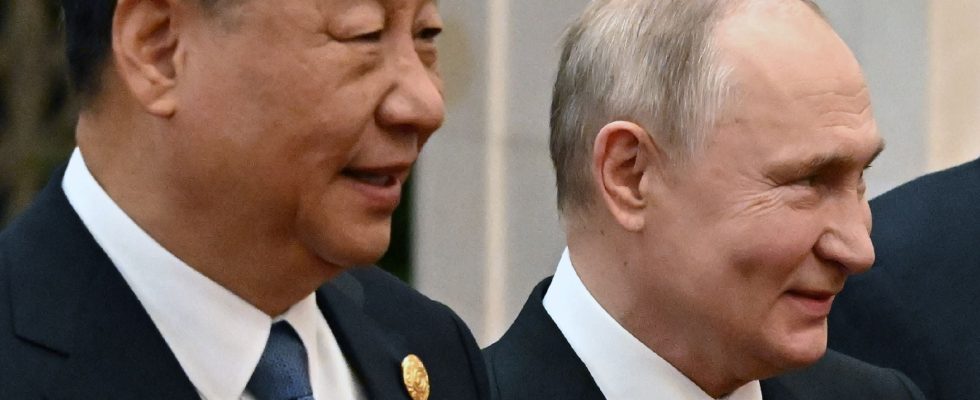From Ukraine to Gaza, from China and the Indo-Pacific to sub-Saharan Africa: for defense experts at the International Institute for Strategic Studies (IISS), the decade ahead should undoubtedly be “more dangerous”, according to their 2024 Military Balance report published this Tuesday, February 13. The institute emphasizes that the world entered “a highly volatile security environment” last year, citing Azerbaijan’s victory against Armenian separatists in Nagorno-Karabakh and the coups in Niger and Gabon. , and believes that this is set to last and intensify further.
“The current military security situation heralds what is likely to be a more dangerous decade, characterized by a marked reliance by some on military power to assert their demands […] as well as by the desire, among like-minded democracies, to strengthen bilateral and multilateral defense ties, in response to this situation,” summarizes the document.
The “ingenuity” of the Ukrainian army
As the war in Ukraine soon enters its third year, the IISS presents a very comprehensive assessment of the state of the conflict. Thus, the institute estimates that Moscow’s army has lost nearly 3,000 combat tanks since the start of the invasion, or the entire operational reserves it had in February 2022. If it has since compensated for its losses in drawing mainly on its stocks of vehicles which were not in service at the time, it remains forced to favor quantity to the detriment of quality. kyiv, on the other hand, has so far been able to compensate for its equipment losses thanks to Western aid, even gaining in quality. The Ukrainian army has also demonstrated “ingenuity”, particularly in the Black Sea, with the use of marine drones.
However, the institute’s experts are also critical of Westerners and their surely too naive vision of what war really is. “After several wars in which Western countries enjoyed overwhelming superiority in terms of equipment, the idea seems to have taken hold that the combat phase of a conflict should end quickly. Ukraine reminds us “wars are generally long-term affairs”, explains the IISS, recalling how the last phase of the conflict had brought to light “trench warfare” and the value of “capabilities such as mines and fortifications” .
Military budgets on the rise
This is perhaps the main observation made by the IISS: military spending experienced a historic increase in 2023. This jumped 9% last year, reaching 2,200 billion dollars (2,000 billion dinars). ‘euros), unprecedented according to the IISS, which still expects a further increase this year.
The Institute mainly explains this phenomenon by the war in Ukraine and tensions with China, and notes that NATO members outside the United States are particularly concerned. An increase which can also be explained by Western and particularly European disengagement in their armies in recent years, and of which Donald Trump’s new declaration on NATO has raised awareness on the subject.
According to the IISS, only 10 of the Alliance’s 31 member countries are meeting the target of spending 2% of GDP on military spending, but 19 have increased this spending. “The fighting in Ukraine has shown the extent to which the armed forces and defense industries have lost their ability to quickly replenish their ammunition stocks,” points out the IISS. “After the Cold War, many Western forces reduced or abandoned their stockpiles, under pressure from politicians who wanted to eliminate stockpiles deemed excessive in the absence of a clear threat. Today, military leaders and some politicians recognize it was a mistake and are backtracking.”
The report notes that Russia and China now devote more than 30% of their public spending to the military sector, while the West is “slowly” increasing their production of missiles and munitions after years of underinvestment.
Beijing’s “projection force”
Another focal point of tension, which could rock the world in the coming years: growing tensions in the Pacific, particularly between the United States and China. The report explains that Beijing is continuing its policy of modernizing its strategic forces and transforming its army into a “projection force” capable of intervening far from its borders, leading in response to a strengthening of the defensive alliances of its worried neighbors.
“China is asserting itself more and more, and not only in its immediate neighborhood” like Taiwan, notes the report, evoking the flight of Chinese balloons into the American sky, the deployment of ships around the world or diplomatic efforts in some distant conflicts. Even if to deal with it, “the United States has also intensified its efforts to strengthen regional ties and counterbalance a more assertive Chinese foreign policy”, as reported recently by L’Express.
The dangers of artificial intelligence
Last point of this report, not insignificant: the new challenge of generative artificial intelligence. While the IISS recalls the declaration of an American general who described AI as “probably the most revolutionary technology in a very, very long time”, and whose armies are exploring possible uses in their chain of command (more autonomous weapons, improvement of supply management), the latter also presents significant dangers in terms of cybersecurity. Without forgetting the tensions around access to resources, in particular the famous semiconductors, on which the United States has placed export restrictions to China.
Despite everything, the IISS report recalls the essential vigilance regarding AI, especially given the obviously much greater challenges in the defense sector. “Microsoft had to impose limits on its chatbot after it said it was interested in obtaining nuclear codes. These ‘hallucinations’ can be comical or disturbing in civilian applications. They can be devastating in a military context, by incorrectly identifying targets. One more challenge, in a world that didn’t seem to lack one.
